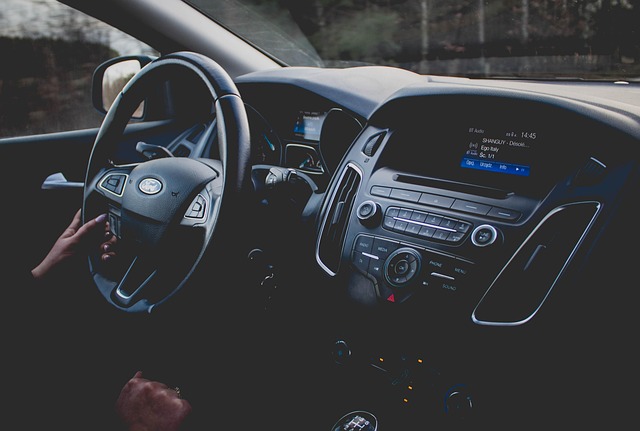“Thinking of registering your car in California? Navigating the process can seem daunting, but with the right preparation, it’s a breeze. This guide walks you through every step, from understanding key requirements like DMV vehicle registration and accurate VIN verification, to gathering essential documents and completing the application. By following these simple steps, ensure a smooth experience using either your local DMV or online services.”
- Understand California Vehicle Registration Requirements
- Gather Necessary Documents for Car Registration
- Visit Your Local DMV or Use Online Services
- Verify Vehicle Identification Number (VIN) Accuracy
- Complete and Submit the Registration Application
Understand California Vehicle Registration Requirements

Before registering your car in California, it’s crucial to understand the state’s specific requirements. The California Department of Motor Vehicles (DMV) mandates several key steps and documents for a successful registration. One essential aspect is ensuring the Vehicle Identification Number (VIN) is accurate and verified. This unique 17-character code is a critical identifier for your vehicle, similar to a fingerprint. A reliable method to verify the VIN is through a mobile vin inspection or using a mobile vin verifier, which can cross-reference the number with national databases to confirm its authenticity.
The DMV requires this verification process to combat fraud and ensure only legitimate vehicles are registered. Additionally, you’ll need to provide essential paperwork, such as proof of ownership and insurance, along with the completed registration application. By following these guidelines and utilizing available tools like mobile vin verification, you can streamline the car registration process in California.
Gather Necessary Documents for Car Registration

Before you can register your car in California, you’ll need to gather several essential documents. The process begins with ensuring that your vehicle has a valid and accurate Vehicle Identification Number (VIN) inspection. This is typically conducted using a DMV VIN verifier or a mobile vin verifier, which checks the VIN against national databases to verify its authenticity. Once you have confirmation of a clean VIN, collect these key documents:
1. Proof of ownership: This can be in the form of a bill of sale or a previous registration certificate.
2. Valid driver’s license: Ensure it is up-to-date and issued by California.
3. Vehicle insurance proof: A current policy that meets California’s minimum liability requirements.
4. Registration fee: You’ll need to pay the required fees at the time of registration.
5. Emission test results (if applicable): Some vehicles may require a recent emissions test.
Visit Your Local DMV or Use Online Services

Visiting your local DMV or utilizing online services are two efficient ways to begin the car registration process in California. The Department of Motor Vehicles (DMV) offers convenient options for vehicle registration, including the verification of a Vehicle Identification Number (VIN). This is a crucial step that ensures the accuracy and legitimacy of your car’s details. By using the DMV’s VIN verifier, you can confirm the make, model, year, and other critical attributes of your vehicle, which is essential for maintaining accurate records.
Online services further streamline this process by allowing you to submit necessary documents digitally, including proof of insurance and ownership transfer. This not only saves time but also reduces potential errors that may occur during manual data entry. Whether you opt for in-person visits or leverage the benefits of digital platforms, ensuring your car’s VIN is inspected and verified will make the registration process smoother and more efficient.
Verify Vehicle Identification Number (VIN) Accuracy

Before registering your car in California, it’s crucial to ensure the Vehicle Identification Number (VIN) is accurate and valid. This unique 17-character code is a key component in identifying your vehicle, so any errors or discrepancies could lead to registration delays or even rejection. A simple yet effective step is to use a DMV VIN verifier or mobile vin inspection tool to cross-reference the number against official databases.
Compared to traditional methods, leveraging a mobile vin verification service can save you time and effort. These services often provide instant, accurate results, confirming whether the VIN belongs to a legitimate vehicle model. By ensuring your VIN is correct, you streamline the registration process and minimize potential issues that could arise from an inaccurate or altered VIN.
Complete and Submit the Registration Application

After gathering all the necessary documents and ensuring your vehicle meets California’s requirements, it’s time to complete and submit the Registration Application. This form is available at your local DMV or online, making it easily accessible for convenience. Fill out every section accurately, providing detailed information about your vehicle, including its make, model, year, and unique Vehicle Identification Number (VIN). A key step in this process involves utilizing a DMV VIN verifier to ensure the vehicle’s history is clean and free from any red flags.
Submitting an incomplete or inaccurate application can delay the registration process. Double-check all details before mailing or submitting the form electronically. Remember, accurate documentation and a thorough vin inspection are vital steps in securing your vehicle’s registration in California. Opting for a mobile vin verifier can streamline this process by providing instant results, making it a convenient solution for those looking to expedite their registration.
Registering a car in California involves understanding clear requirements, gathering essential documents, and accurately verifying your vehicle’s Identification Number (VIN). By visiting your local DMV or utilizing online services, you can efficiently complete the process. Remember to double-check the VIN using a reliable dmv vin verifier to ensure accuracy before submitting your registration application. With these steps, you’ll be on your way to legal California car ownership in no time.
